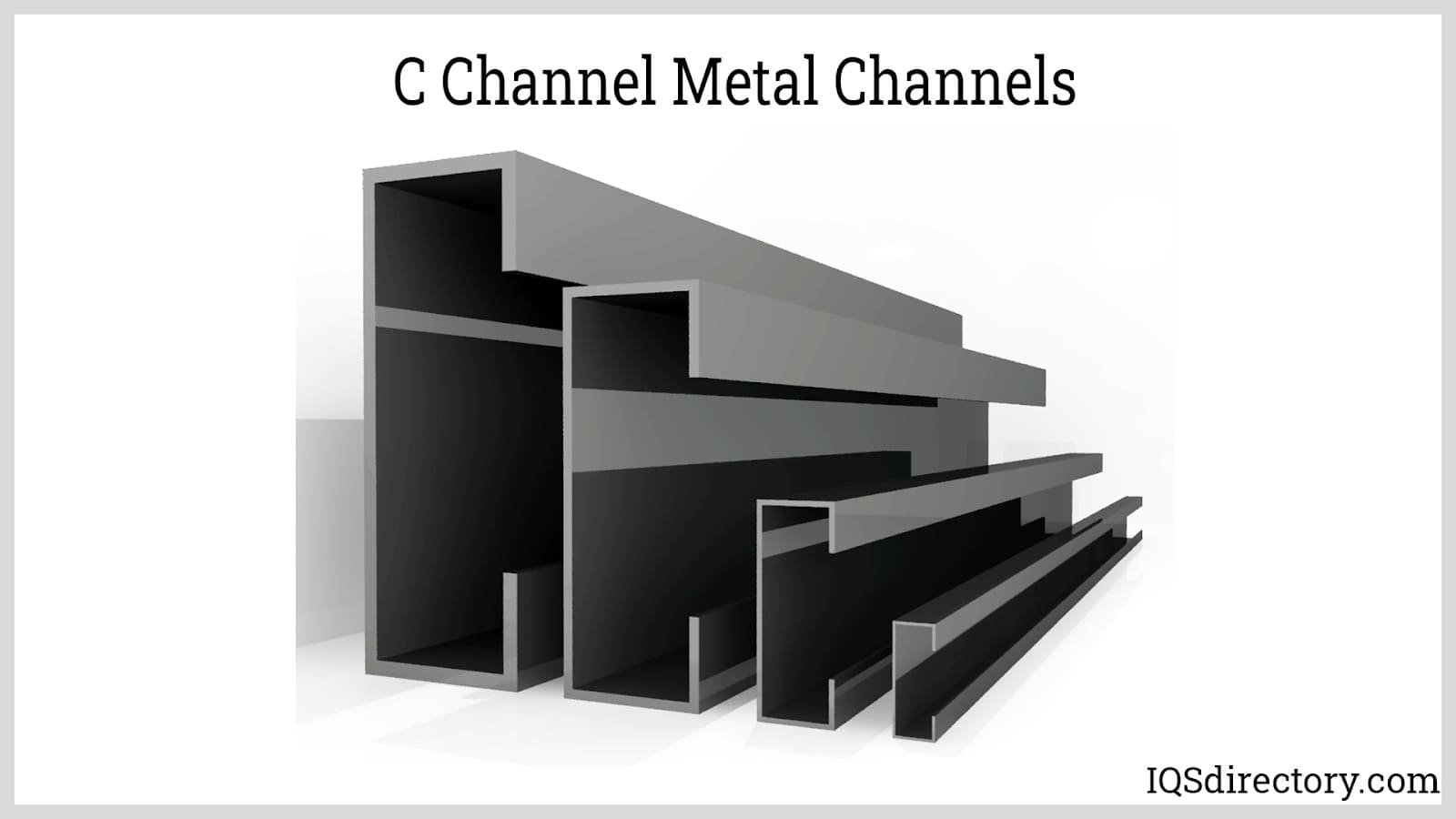J-Channel metal is a trim used in siding installation, providing a finished edge for panels. It is commonly made of aluminum or vinyl.
When installed correctly, J-Channel creates a clean and professional look to the exterior of a building. This type of metal trim is versatile and can be used with various siding materials, such as vinyl, fiber cement, or wood. J-Channel metal comes in different colors and styles to match the aesthetic of the building.
Whether you are a homeowner looking to enhance your property’s curb appeal or a contractor seeking reliable trim solutions, J-Channel metal is a practical choice for your siding project.

Credit: eagle-aluminum.com
What Is J-channel Metal?
J-Channel metal is a versatile and essential component in the construction industry. Let’s delve into the specifics of what J-Channel metal is, its definition, purpose, common materials, and finishes.
Definition And Purpose
J-Channel metal is a thin, C-shaped piece of metal designed to fit around the edges of exterior siding materials. Its main purpose is to provide a clean and finished look to the edges of siding or soffit panels.
Common Materials And Finishes
J-Channel metal is commonly made from aluminum, vinyl, or steel for durability and weather resistance. It comes in various finishes, including painted, anodized, or powder-coated options to suit different aesthetic preferences.
Advantages Of Using J-channel Metal
Weather Resistance
J-Channel Metal provides excellent durability against harsh weather conditions.
- Resistant to corrosion, rust, and UV rays
- Ensures long-term protection for the building
Aesthetic Appeal
J-Channel Metal enhances the visual appeal of buildings.
- Complements various architectural styles
- Offers a clean and seamless finish
| Benefits of J-Channel Metal |
|---|
| Enhanced Weather Resistance |
| Improved Aesthetic Appeal |
Installation Techniques For J-channel Metal
When it comes to installing J-Channel Metal, it is crucial to ensure the proper techniques are followed to achieve a durable and visually appealing result. The installation process requires attention to detail and careful execution to ensure the J-Channel Metal is securely and accurately installed. In this section, we will explore the essential installation techniques for J-Channel Metal, focusing on preparation and tools, as well as best practices for mounting.
Preparation And Tools
Before beginning the installation of J-Channel Metal, it is essential to gather the necessary tools and prepare the mounting surface to ensure a seamless installation process.
- Gather the following tools: measuring tape, level, screwdriver, hammer, and fasteners.
- Thoroughly clean the surface where the J-Channel Metal will be mounted to remove any debris or dirt that could affect the adhesion.
- Measure and mark the precise locations where the J-Channel Metal will be installed, ensuring accuracy in the placement of the channel.
- Utilize a level to ensure the mounting surface is even and aligned correctly for the installation.
Best Practices For Mounting
Proper mounting techniques are crucial for the stability and longevity of the J-Channel Metal installation. Follow these best practices for a successful mounting process:
- Start by aligning the J-Channel Metal with the marked measurements and ensure it is positioned accurately.
- Use the appropriate fasteners to secure the J-Channel Metal into place, ensuring a secure and stable attachment.
- Utilize a hammer or screwdriver to gently tap the J-Channel Metal into position, ensuring it is flush and level with the mounting surface.
- Double-check the alignment and level of the J-Channel Metal before finalizing the installation to guarantee a professional and polished outcome.
Maintenance And Care Tips For J-channel Metal
J-Channel metal is a popular choice for siding and trim on homes due to its durability and sleek appearance. To ensure it remains in top condition and maintains its visual appeal, regular maintenance and care are essential. In this article, we will discuss some important tips for cleaning, inspecting, repairing, and repainting J-Channel metal.
Cleaning And Inspection
Regular cleaning and inspection are fundamental for keeping J-Channel metal looking its best. Here are some simple steps to follow:
- Use a gentle soap and water solution to clean the surface of the J-Channel metal. Avoid abrasive cleaners that could damage the finish.
- Rinse the metal thoroughly with clean water to remove any soap residue.
- Inspect the J-Channel for any signs of damage, such as dents, scratches, or loose sections. Addressing these issues promptly can prevent further damage and ensure the metal continues to provide optimal protection.
- Check for any debris or dirt buildup in the channels. Use a soft brush or cloth to remove any accumulated dirt, making sure to reach all the nooks and crannies.
Repair And Repainting
If you notice any damage or the paint on the J-Channel metal has started to fade or peel, it’s important to take action. Follow these steps to repair and repaint:
- Start by cleaning the damaged area with a mild detergent and water solution. Ensure it is thoroughly dry before proceeding.
- Apply a rust inhibitor on any rust spots to prevent further corrosion.
- For small scratches or dents, you can use a touch-up paint specifically designed for metal surfaces. Follow the manufacturer’s instructions to achieve a seamless repair.
- If a larger area needs repainting, prepare the surface by sanding it lightly to create a smooth base. Remove any loose paint flakes and clean the area again.
- Apply a primer suitable for metal surfaces to help the new paint adhere properly.
- Once the primer is dry, apply the desired color of paint using a brush or roller. Ensure you apply even coats and let each layer dry before applying the next.
- Finally, inspect the repainted section for any missed spots or imperfections. Touch up these areas as necessary.
Following these maintenance and care tips for J-Channel metal can help extend its lifespan and keep it looking beautiful for years to come. By taking the time to clean, inspect, repair, and repaint when needed, you can ensure that your J-Channel metal remains an attractive and functional element of your home’s exterior.
Innovative Uses Of J-channel Metal
When it comes to versatile and functional building materials, J-Channel Metal stands out as a popular choice among architects and designers. Its unique profile and durability make it ideal for a wide range of applications. In this blog post, we will explore the innovative uses of J-Channel Metal, showcasing its creative design applications and the endless possibilities for customization and personalization.
Creative Design Applications
J-Channel Metal offers numerous creative design applications that allow architects and designers to bring their visions to life. Whether used as an accent or a focal point, this versatile material adds a touch of elegance and sophistication to any project. Here are some exciting design ideas where J-Channel Metal can be applied:
- Exterior siding: J-Channel Metal can be used to create visually appealing and durable exteriors for residential or commercial buildings.
- Window trim: By incorporating J-Channel Metal as window trim, architects can add a contemporary and polished look to their designs.
- Facade detailing: With its clean lines and sleek profile, J-Channel Metal enhances the aesthetics of architectural facades, providing a modern and sophisticated appearance.
- Signage and branding: J-Channel Metal offers an ideal solution for creating attractive and durable signage, allowing businesses to effectively display their logo and brand identity.
- Interior accents: From wall paneling to crown molding, J-Channel Metal can be used as a stylish interior accent, elevating the overall design aesthetics of any space.
Customization And Personalization
One of the key advantages of J-Channel Metal is the ability to customize and personalize its appearance to suit specific design requirements. Architects and designers can explore various options and techniques to achieve the desired look. Here are some customization possibilities for J-Channel Metal:
- Color options: J-Channel Metal is available in a wide range of colors, allowing designers to select the perfect shade that complements the overall design scheme.
- Texture variations: By incorporating different textures, such as brushed or embossed finishes, J-Channel Metal can add depth and visual interest to the design.
- Size flexibility: J-Channel Metal can be manufactured in various sizes, enabling architects to achieve a precise fit and seamless integration within their designs.
- Pattern creation: Custom patterns can be created by cutting the J-Channel Metal to desired shapes, offering unlimited design possibilities.
- Embellishments and accents: Accessories and embellishments, such as decorative trims or engraving, can be added to J-Channel Metal, providing a unique and personalized touch.
With its versatility and customization options, J-Channel Metal allows architects and designers to transcend conventional design boundaries, creating truly innovative and breathtaking structures that captivate the imagination.

Credit: www.iqsdirectory.com
Frequently Asked Questions Of J-channel Metal
What Is J-channel Metal Used For?
J-Channel metal is commonly used as a trim for siding and roofing installations. It provides a finished look and helps to secure and conceal the edges of siding panels. J-Channel metal is also used for creating clean and crisp inside corners in siding applications.
How Do You Install J-channel Metal?
To install J-Channel metal, start by nailing it to the surface, positioning it so that it fits snugly against the siding panels. Make sure to leave enough space for expansion and contraction. Then, secure the J-Channel with additional nails or screws along its length, ensuring it remains straight and level.
Finally, caulk the edges for added protection against moisture.
Can J-channel Metal Be Painted?
Yes, J-Channel metal can be painted to match the color of your siding or trim. Make sure to clean and prep the J-Channel surface before painting. Use a paint specifically formulated for metal surfaces and apply it evenly with a brush or roller.
Allow the paint to dry completely before installing the J-Channel.
What Are The Benefits Of Using J-channel Metal?
Using J-Channel metal offers several benefits. It provides a clean and professional finish to your siding installation, enhancing the overall appearance of your home. J-Channel metal also helps to protect the edges of siding panels, preventing damage from exposure to the elements.
Additionally, it allows for easy installation of siding around windows, doors, and other openings.
Conclusion
In the end, using J-Channel metal can greatly enhance the aesthetics and functionality of your building exterior. As a versatile and durable material, it offers a range of benefits for siding installation and trim work. With its ease of installation and long-lasting performance, J-Channel metal is a valuable addition to any construction project.


